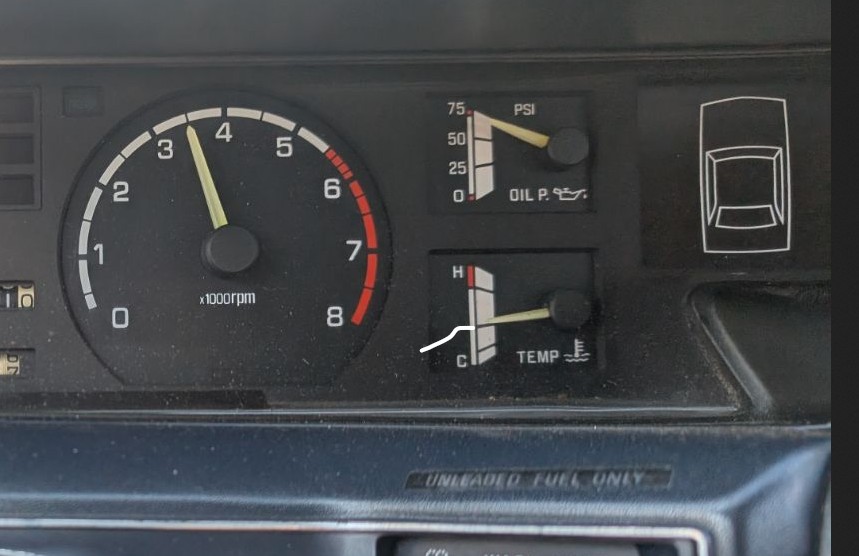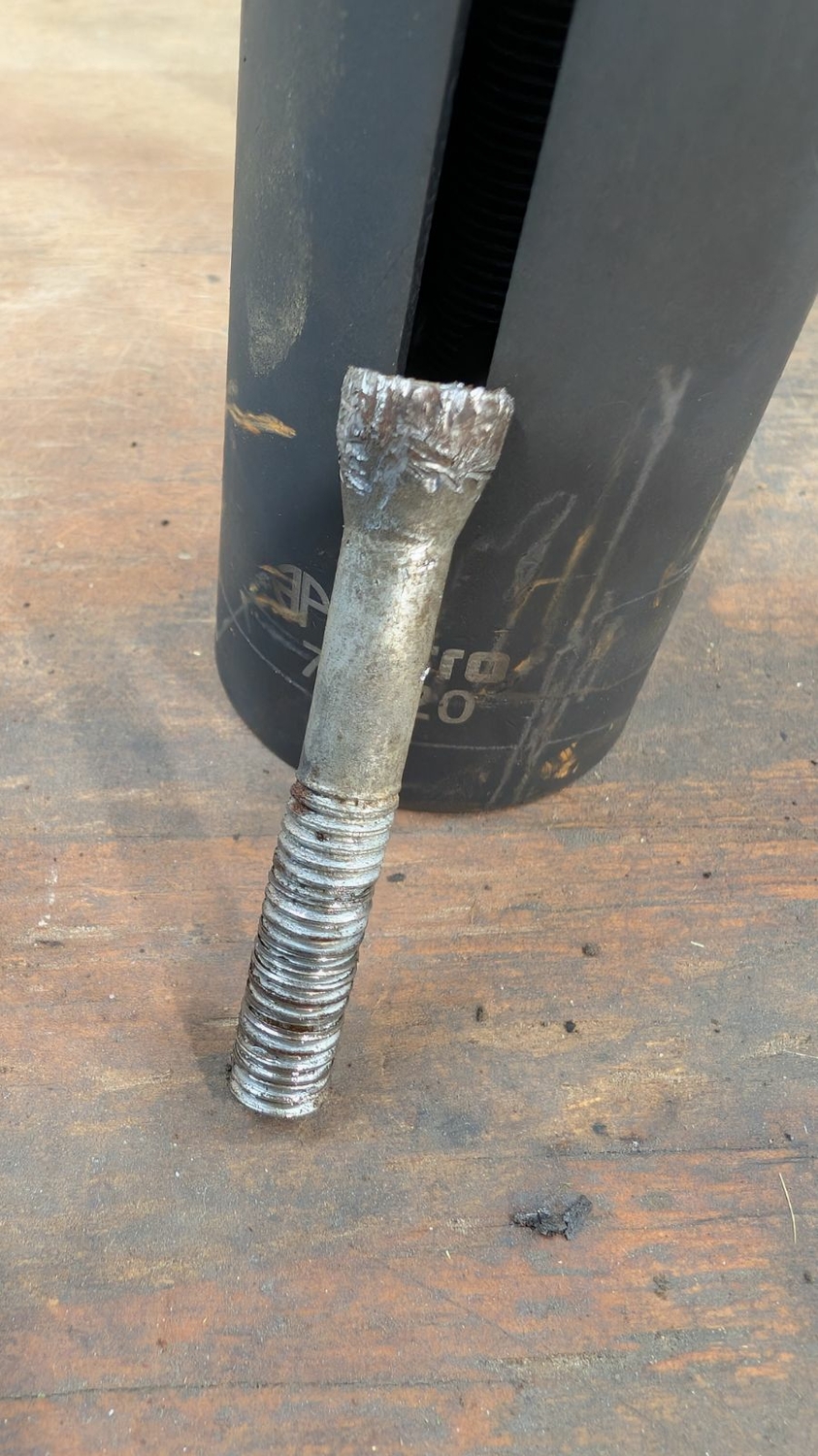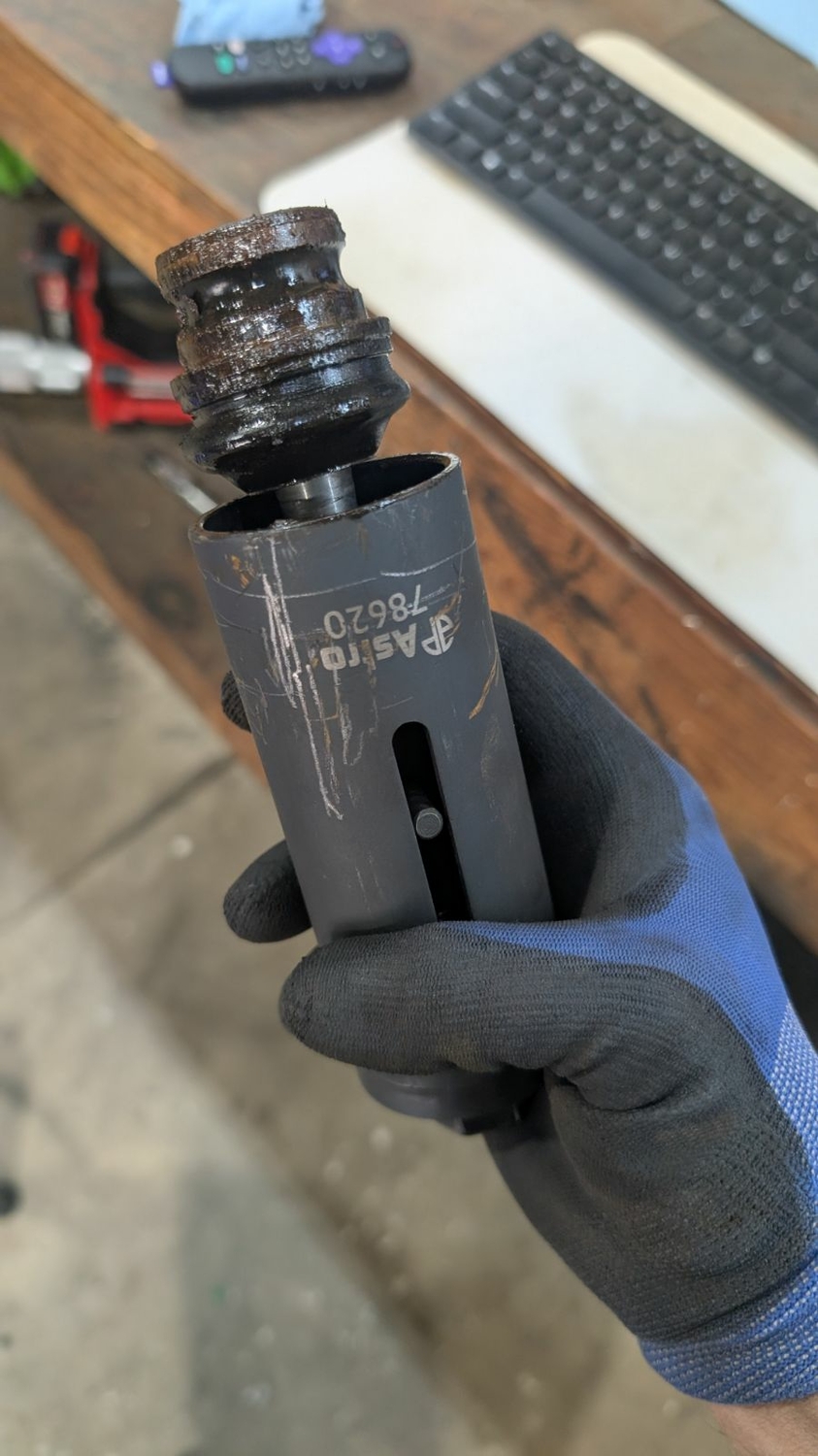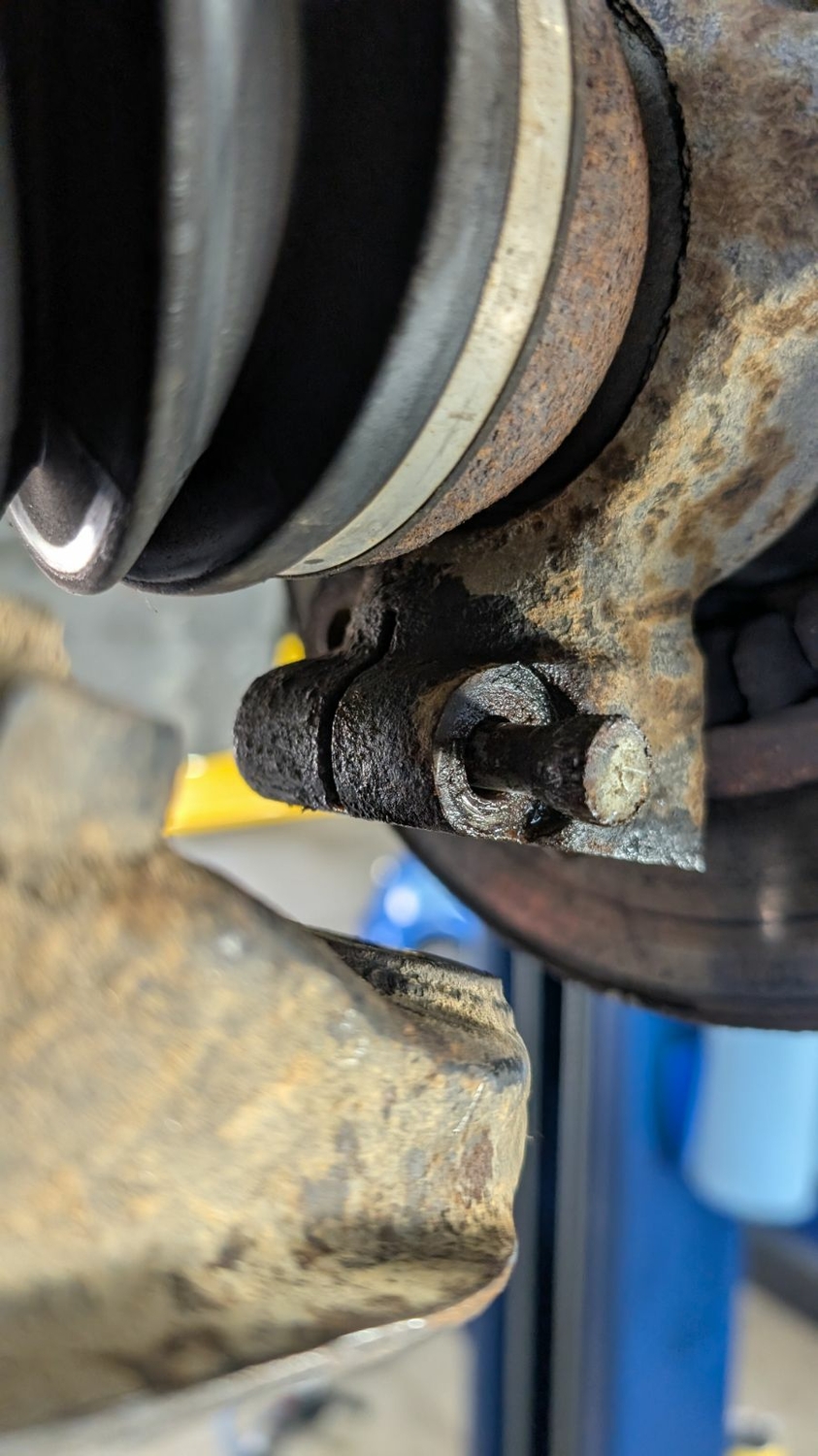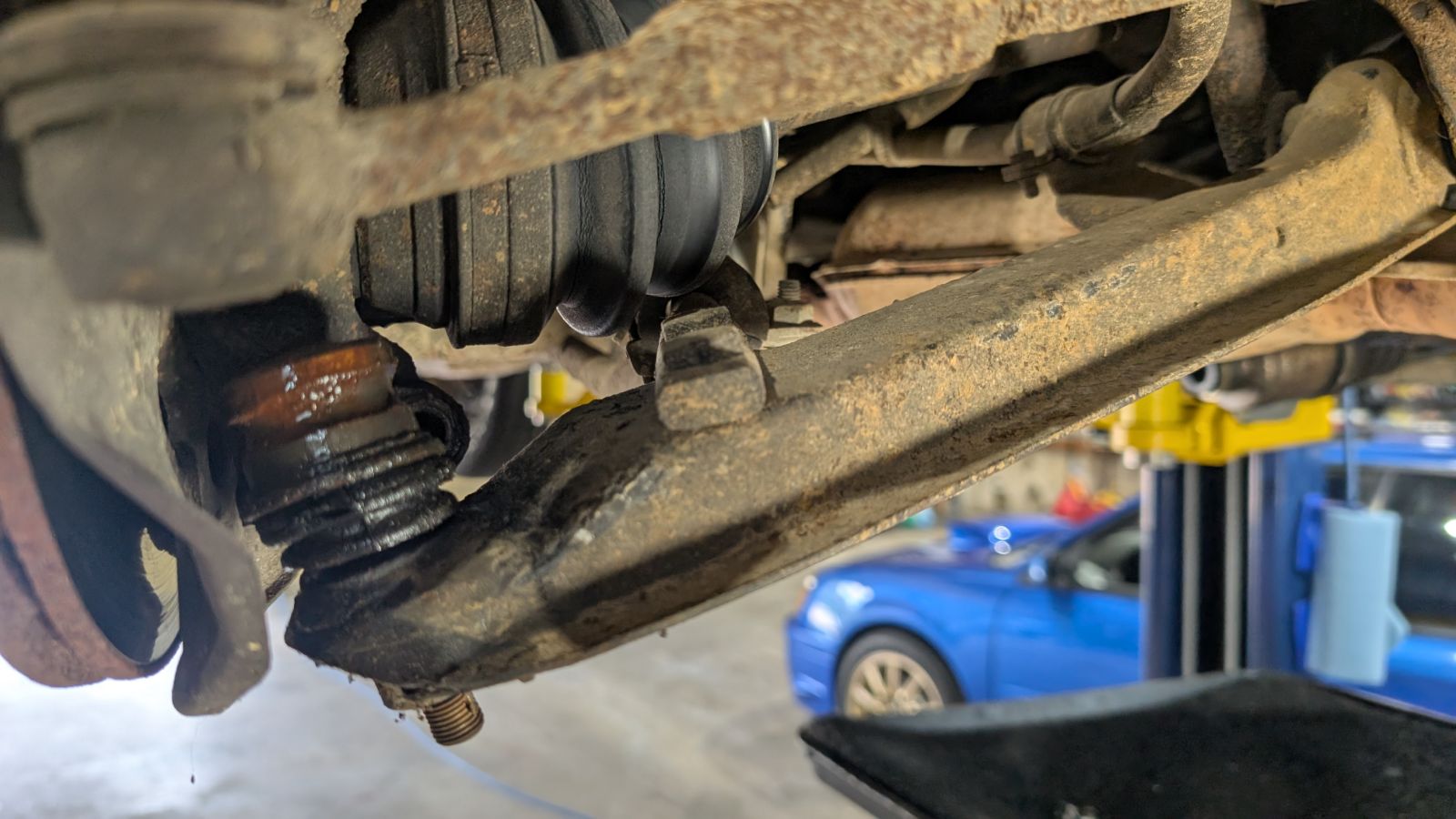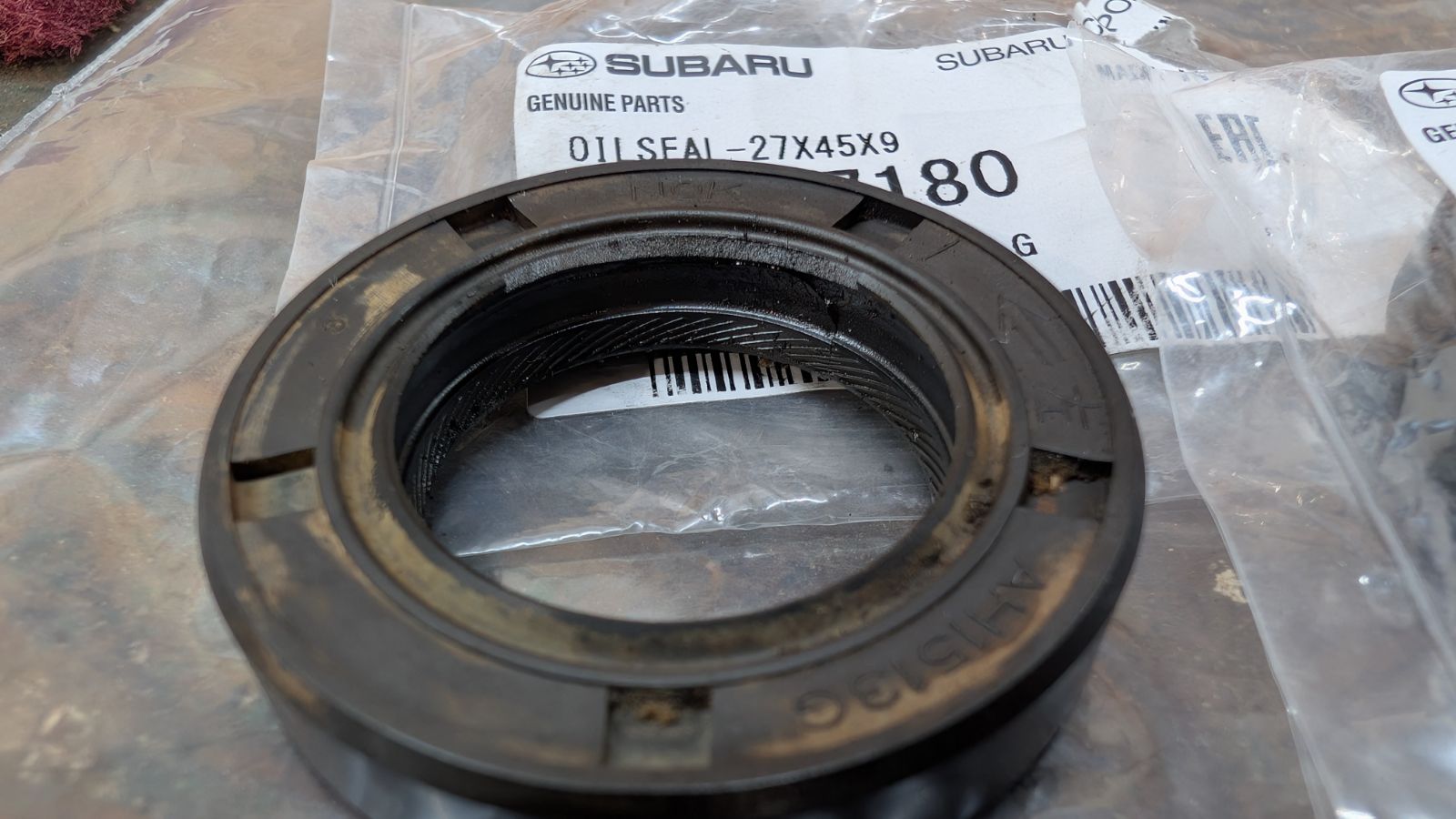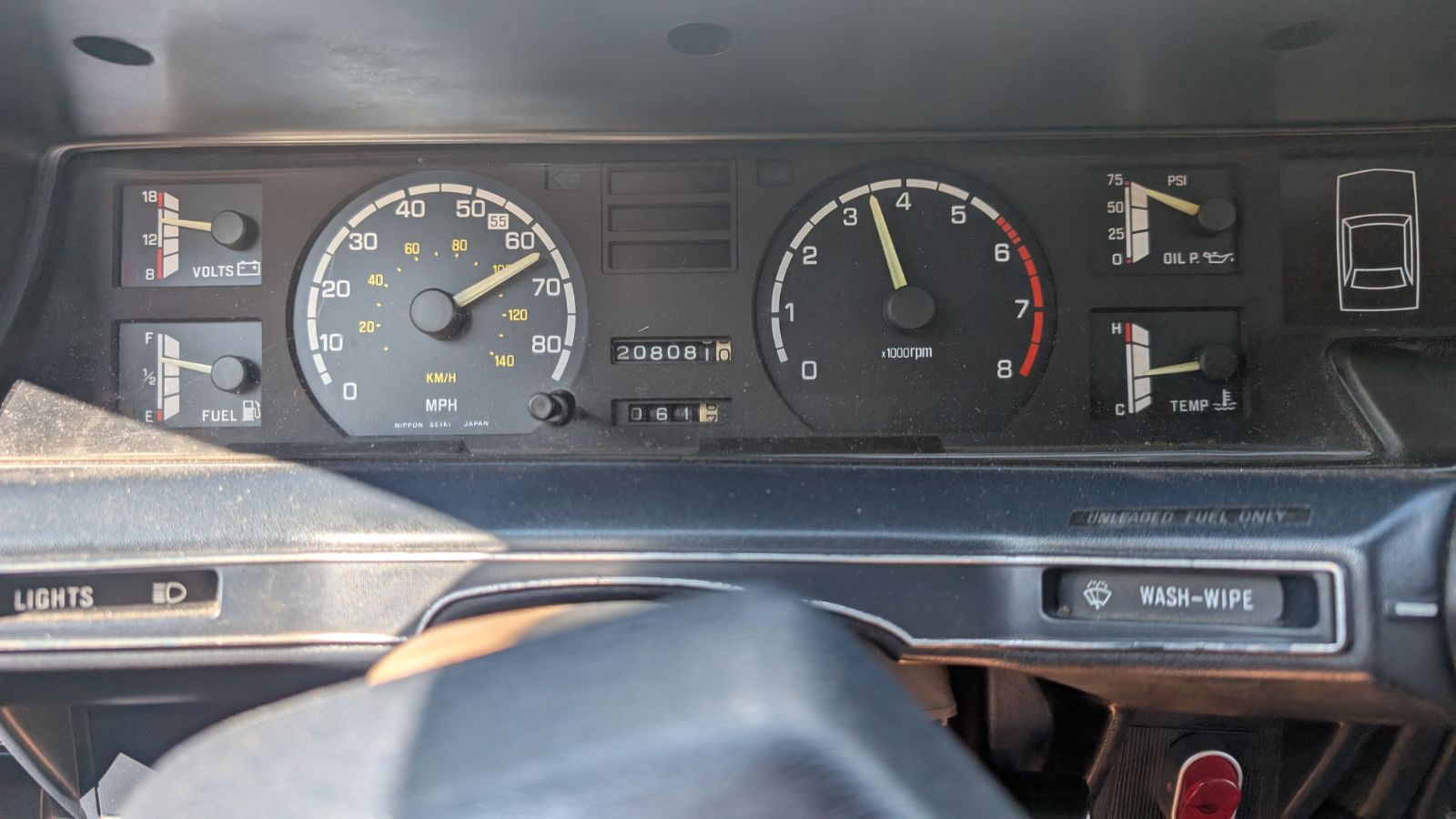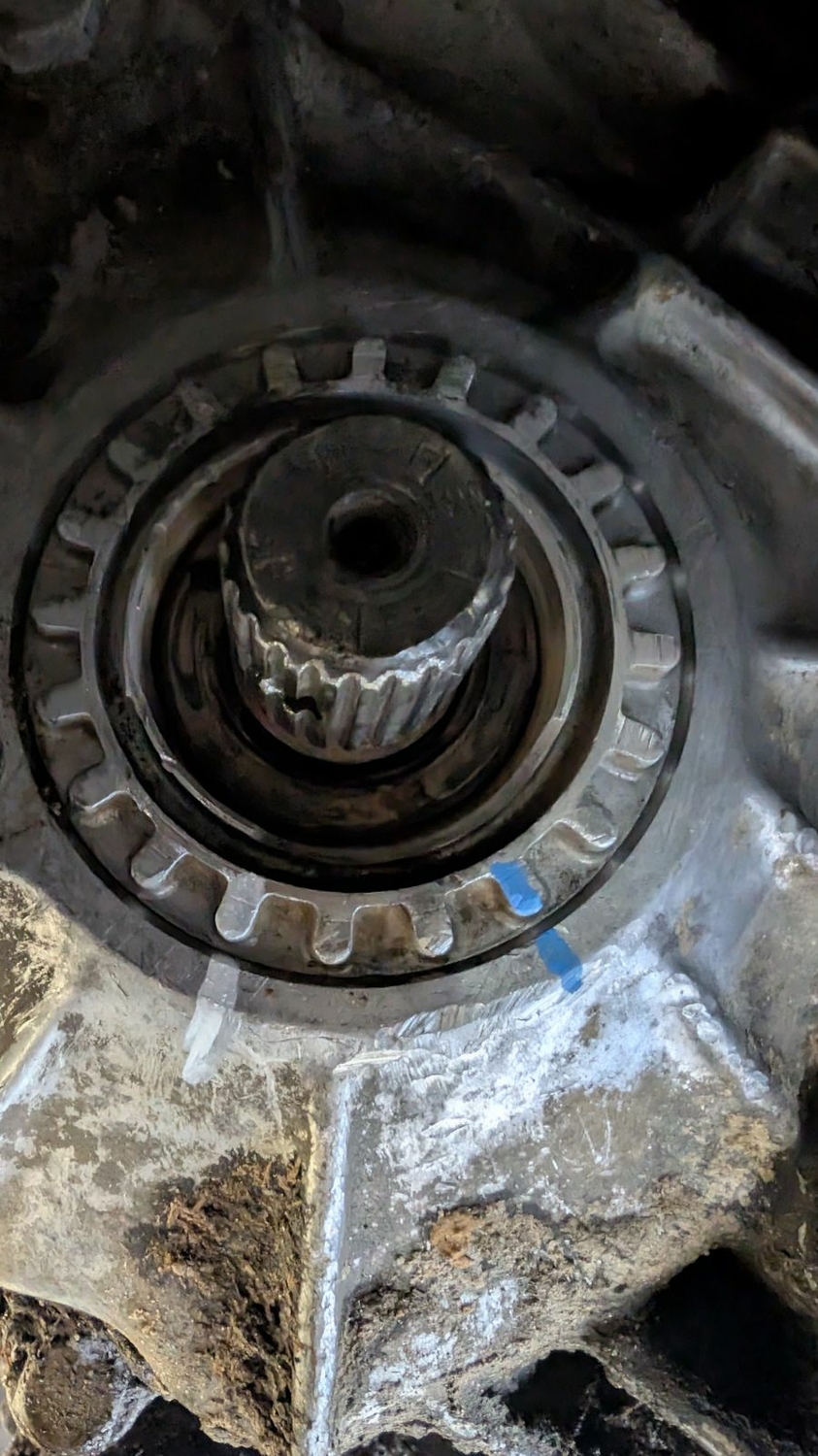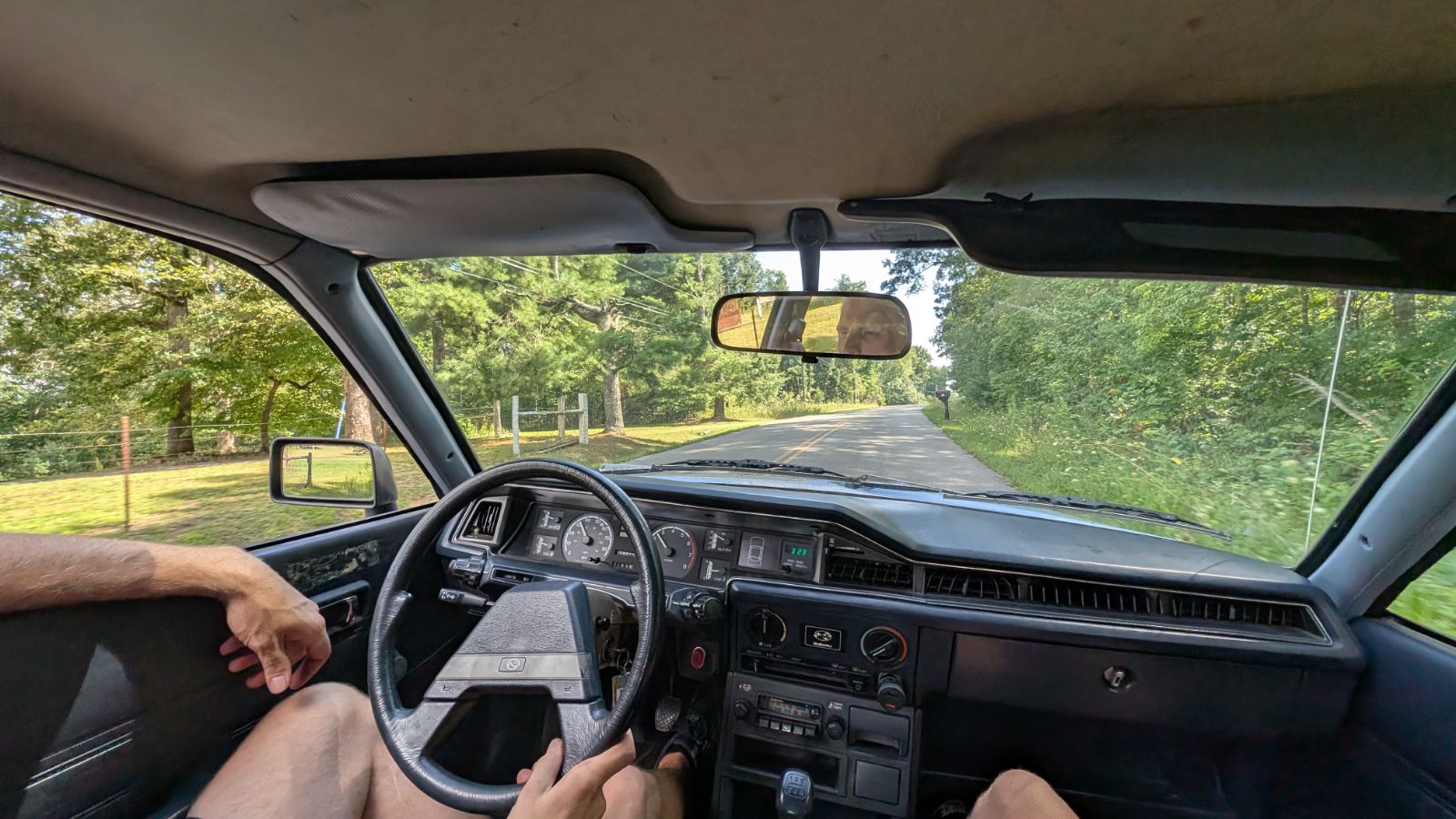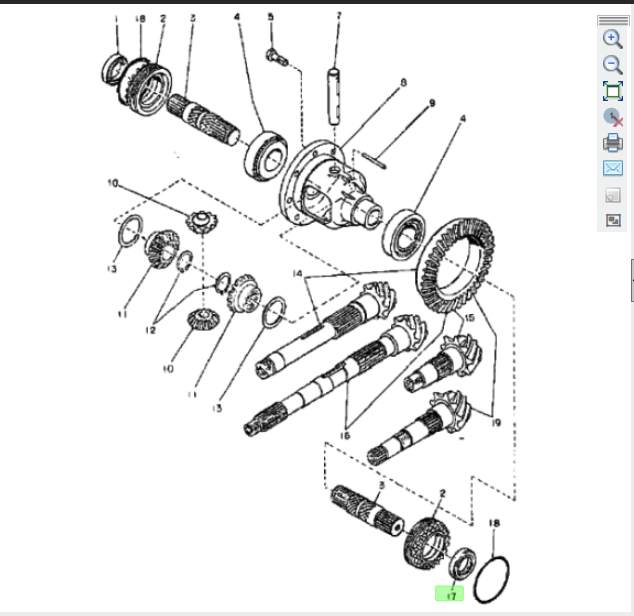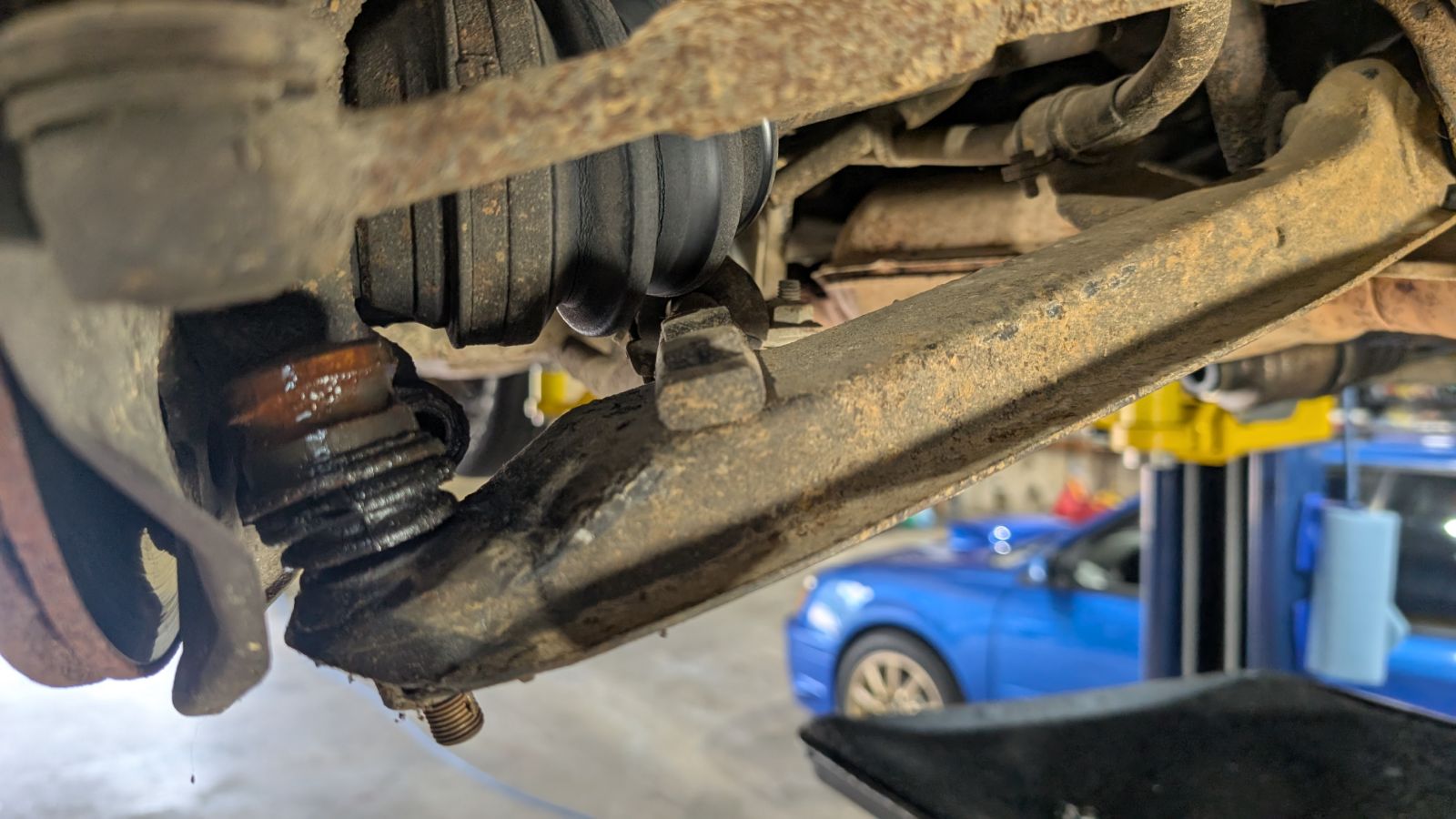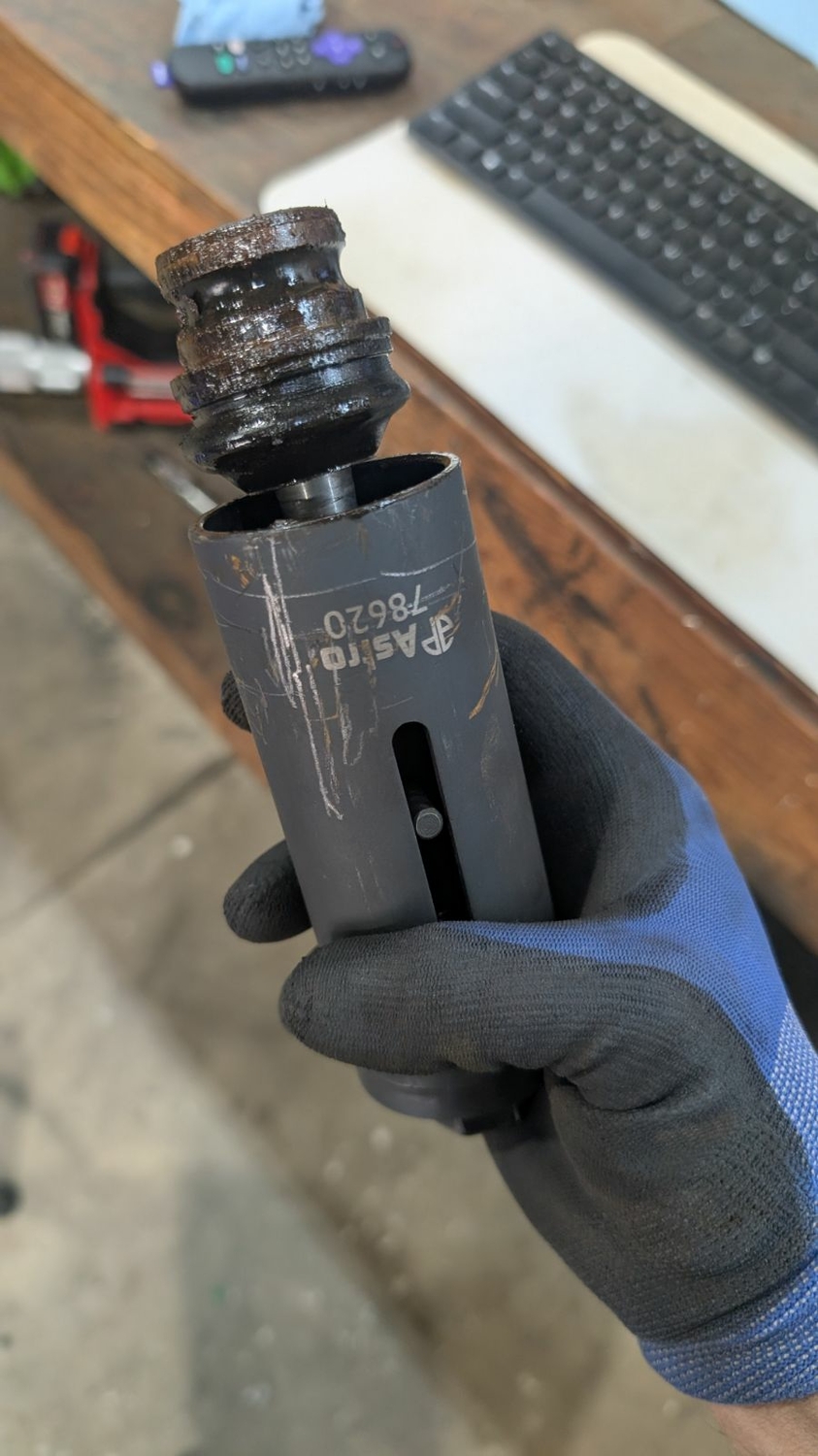All Activity
- Past hour
-
They're going 65mph in the photo... at that speed, it should be firmly at the bottom line, where the thermostat opens. EA81s aren't picky about thermostats, since they're on top like most older vehicles - it's the newer EJ motors that have them on the bottom that are super picky. My first guess would be a clogged radiator. Where on your temperature gauge does the thermostat open? From a cold engine, keep feeling the outlet side. It'll be cold and then suddenly hot when the thermostat opens. Then keep watching the gauge, and also note where the electric fan kicks on. These are your reference points for where the gauge should read. On level highway it should be at the point the thermostat just opens, and it should never exceed the point where the fans kick on, at any speed.
-
I noticed that as well when I was driving it. I do know that I have a seeping radiator and trying to get a plan in action to either get it repaired or find a replacement. I did order an OEM thermostat this morning because I know how finicky the EA81 can be about aftermarket thermostats and I have no clue what's in it. The good news is the fan does run, unlike the others that I had that ran the fan all the time. My brat with an OE thermostat usually sat around this line that I have marked and I watched it constantly. I am also going to replace the radiator cap. Are the Stant ones okay? I asked my dealer and I can't get an OE one anymore.
- Today
-
I, personally, would not worry about the temp gauge. To me, that’s where I would want it to be, about the middle. I have never owned an EA81, but my ‘04 Nissan, my daughter’s ‘02 Outback and my wife’s ‘17 Legacy, all run in the middle.
-
I'm not familiar with the older gens. Does each line indicate something? Like first line is where the thermostat opens, second line is "high normal op temperature", 3rd is "dancing with danger" and 4th is really not good? I've never opened an older gen FSM or owners manual, let alone seen an older gen in the flesh other than a BRAT at a car show once. Are the dash readouts known for any inaccuracies such as the 3rd gen oil pressure gauges being quite vague?
-
That’s where the thermo fans kick in! My brumby with that dashboard conversion (we never got them in the brat/brumby from factory like you guys in the states did) does the exact same thing when there’s not enough airflow through the radiator - typically when in traffic. Unless you were pulling highway speeds I wouldn’t stress about it, particularly if it came back down to normal op temp just above the first black line. Cheers Bennie
-
That temperature gauge is *way* too high. Address that promptly or you'll be getting to do head gaskets very soon. At highway speeds the needle should be at the lower black line, and it should never get to the second black line.
-
He texted me today and said it did not want to start. Crancks but not fire. If he sprays a little starting fluid in the vacumm port, it starts right up and will continue to do so for the day. Seems like when it sits, it's loosing fuel pressure. I suggested he Tee in a pressure gauge after the fuel filter to see what's happening. - Engine has been changed 2.5 to 2.2 swap. - He changed the fuel pump and filter to new NAPA units. I changed the 3 relays on the drivers side next tothe fuses. I have not had the time to dig into the schematics. That should be pretty much it, unless the fuel pump is not being powered.
- Yesterday
-
I also changed my ball joints. Not sure why someone stuck this kind of bolt in the pinch area of the hub but luckily I had a spare:
-
Changed the axle seal yesterday on the driver side. Now that I know how to do it, I could definitely do it again. I think having a shop press would making it easier in the future. I do have a Harbor Freight gift card burning a hole in my pocket. You can see the damage on the seal here. Fixed a flashing issue on the turn signals too. Someone stuck too small of a bulb in it. Took it for the longest drive it's had since I got it. Tried to give her some beans to get any junk ran through the carb. 806970020 Adding this for anyone else: CV axle seals/LHD Left/driver side is 806727180 Right/Passenger side is: 806727170 2 o-rings are 806970020
-
2.2 OBD2 swap into ‘85 Brat
Greentractorfarmer replied to Greentractorfarmer's topic in Old Gen.: 80's GL/DL/XT/Loyales...
The new knock sensor is a mid-range cost unit, likely Chinese manufacturer but I can’t find the paperwork to confirm. Today, I looked at the old sensor I had replaced to refresh my memory. It has a light crack horizontally around more than half the unit, but no track from obvious electric leakage and tests 560K ohms. I’d removed that sensor and put it back in a few times in my history with this engine, and didn’t find any difference in performance. The trouble code would show occasionally but ran fine. The code was why I looked at it a few times, and finally replaced it when the engine started acting up (coinciding with the roll-over wreck and moving it over to the Brat). The resistor showed up and I have a wire rigged to test the engine without the knock sensor, as soon as I can get to the mechanic’s yard. The voltage for the knock sensor, taken at the ECU, shows a hair over 4v, pinout chart is calling for 2.5v. - Last week
-
https://jdmfsm.info/Auto/Japan/Subaru/--Old Models--/ You're going to want the Loyale Leone EA82 1989 Service Manual at the bottom. Basically scroll all the way down to get the wiring diagrams. Also section 2.7 has good electrical information and shows what pins go where on the ECU and to what sensors. :]
-
I’ll test out the values tomorrow, I would like the link for the diagram because I’m pretty sure that it has to be something with the wiring harness or the CTS itself but I won’t know until I test. I wanna see where specifically the CTS plugs into the ECU so maybe I can bypass the OEM harness and essentially create my own and that’s good know. I’ll see if I can clean the grounding wires in the bay or maybe provide grounding through the pins if it’ll let me, but if it’s the harness as I think I don’t think that’ll work. Also just as a note I do have initial combustion, it starts, but then dies, as if something isn’t communicating right with the car, when I used the test connectors I had oil pressure, the temp gauge was working and fueling was good the temp gauge working confused me at the start but I did see that I have two temp sensors, one for the gauge and one for the ECU so at least I know the gauge one works
-
2.2 OBD2 swap into ‘85 Brat
Greentractorfarmer replied to Greentractorfarmer's topic in Old Gen.: 80's GL/DL/XT/Loyales...
When salvaging the engine from the wagon, all the sensors came over to the Brat, along with the cut-down loom and ECU, because all was running well (in the wagon, 5K miles on that swap). Also the exhaust, and fuel pump. So the knock sensor came with, and the cut-out stutter began in the Brat. The trouble code for the knock sensor showed intermittently at first, so I removed it and inspected, tested wires for voltage, sensor for resistance. All looked good, except for a small crack in the sensor. So I replaced it with a new unit, and the problem persisted, though the trouble code stopped. I changed the front O2 sensor and ignition coil at the same time as a new alternator, as the original alternator was suspect. Then the crank sensor because that trouble code has been consistent in both cars, and still persists. Though I don’t think it’s the issue, because the idle is so darned smooth, and because the crank sensor trouble code has been a fact of life all along, since the first swap of this engine into the wagon. I’m just bumping along, trying new sensor after sensor, with no success in improving the performance. The latest change was the throttle sensor, because the symptoms align in my mind with that unit’s function. I’m a few days away from trying a resistor to replace the knock sensor, hoping that will give me a direction to follow. BTW, a few weeks ago, I did replace the ECU with one that matches the engine, and putting that in also did not one bit of difference. -
I need to split a transmission soon, and I'll be replacing all the seals while I'm at it... will need to figure out how to set the gears, not just mark the positions. yay.
-
You’ll be right. Do one side at a time so you have a reference point for the removed sundial. If the dial becomes hard to turn about two notches past your original start mark, back it off so the marks line up. Can’t go wrong doing it this way! Cheers Bennie
-
Thanks Bennie, Yes, that's what I'm doing. I have the o-rings as well and was able to get them new from the dealer. All I had to go on was this diagram
-
When you say “centre seal” do you mean on the sundial? The seal is fitted from behind the sundial, so once it’s removed you knock it out towards the direction of the diff (orientation when the sundial is fitted). When you fit the new seal sure you have the correct unit to put in as they are directional. Also have a new large O ring on hand to install too. When you remove the sundial from the gearbox, mark where it’s currently located across the dial and the gearbox case, count the number of turns until the dial is free from the threads, also a good idea to mark where this point is so you’re not potentially counting a turn that’s not engaged on the thread. Cheers Bennie
-
Had some time to do some work today on the GL. Got the axle out of the way for my axle stub seal replacement, ordered a knock-off of the sundial gear socket and did a test run on this spare transmission that I have. Looking at, still not sure how I'm supposed to get this center seal out. I did knock out the ball joints on it and I'm so glad I bought this Astro socket several years ago.
-
Also I checked my service manual, there is no power that goes to the sensor. Only ground and signal from the sensor (a resistance value). If you'd like to test the CTS, get a bowl of water, heated to the temps below and read the resistance values. The values are: 7-11.5 kOhm @ 14°F 2-3 kOhm @ 68°F 700-1000 Ohm @ 122°F I should note that the troubleshooting diagram in the service manual states that unless there is some form of initial combustion when starting the engine, your issue is NOT a CTS. If it does fire and dies, then it is possible. But if it doesn't have initial combustion, then I'd look elsewhere.
-
Could be very possible, engine harness wiring is old and has been dealing with heat cycles for decades. Do you have an engine wiring diagram? If not, they're available online. I could get you a (not broken) link if you need it. PLEASE CONSULT A WIRING DIAGRAM BEFORE YOU GO DISASSEMBLING ANYTHING. For your own understanding and sanity. It may be worth pulling the engine harness (with a diagram by your side), remove the plastic loom and test the wiring. I've had to do this before, bending every wire along its full length to find any internal breaks in the wire. Also test the resistance of every wire, obviously starting where you think the issue is to potentially save yourself time. If there is an intermittent internal break, your ECU may not throw a code. This can make chasing an electrical issue even more challenging. It could also be a bad ground (I believe a ground issue should throw a code, but checking the resistance of engine ground wires isn't that big of a deal) Also, is there white crusties on the CTS or the intake manifold threads? This could cause a ground issue to the CTS. :]
-
I replaced the gas a few months ago, fuel shouldn’t be the problem as if it was I wouldn’t see why it would work with the test connector and CTS situation as for an update on that, I tested the harness going to the CTS and found out I was getting no power which I would assume some current would be going through so I saw that as a problem, tried doing my tried and true method of going direct to power and then plugging the other part of the harness in to the CTS, haven’t found much success with that. Either I’m very wrong about how this sensor works or something is wrong with the harness going back to the ECU
-
It's not the 16 flashes after start up indicating a fault code. When driving for a while, it will start flashing continuously. Engine Temp is fine, normal driving no shifting issues. Turn the car off and start it again and the AT TEMP is back to normal. Helping a fellow here in Colorado Springs. Thoughts? Thanks, Larry


